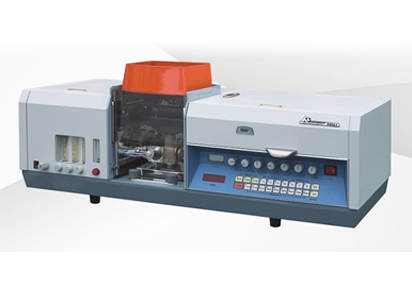 | (National Service Hotline) 400-024-3398 |
National customer service telephone number: 400-024-3398
Contact: Ms. Wu
Mobile phone: 15940520719 13804901037
Tel:
024 - 22526091
024 - 22515162
024 - 22515165
Fax: 024 - 22524338
E-mail: 13804901037@139.com
Address: No. A, No. 51 Youth Street, Shenhe District, Shenyang, Liaoning.
Address: 2 floor, block A, Changbai Electronics Industrial Park, 10-5 Chong Shan West Road, Huanggu District, Shenyang, Liaoning.
Website: www.syhgjm.com
Atomic Absorption Spectrophotometer Manufacturer Atomic Absorption Method: Atomic absorption method is based on the use of gaseous atoms can absorb a certain wavelength of light radiation, so that the electrons in the outer layer of the atom from the ground state to the excited state. Because of the different energy levels of the electrons in various atoms, a certain wavelength of radiation will be selectively resonantly absorbed. The resonant absorption wavelength is exactly equal to the wavelength of the emission spectrum of the excited atom, which can be used as a qualitative basis for elements, and the intensity of the absorption radiation can be used as a quantitative basis. Atomic absorption spectrometry has become the most widely used method for quantitative analysis of inorganic elements. Atomic absorption spectrometry (AAS) has the advantages of low detection limit, high accuracy (relative error less than 1%) and high selectivity (less interference) and fast analysis speed.
When the experimental conditions such as temperature absorption path and injection method are fixed, the ground state atoms of the element produced by the sample absorb the monochromatic light emitted by the hollow cathode lamp of the element as a sharp light source. The absorbance (A) is proportional to the concentration (C) of the element in the sample. In the A=KC formula, K is a constant. According to this, by measuring the absorbance of the standard solution and the unknown solution, and knowing the concentration of the standard solution, the standard curve can be made to obtain the concentration of the elements to be measured in the unknown solution. The method is mainly applicable to the analysis of trace and trace components in samples.
Atomic absorption refers to the absorption phenomenon of gaseous atoms to the characteristic spectral lines radiated by the same kind of atoms.
When the radiation is projected onto the atomic vapor, if the energy corresponding to the radiation wavelength equals the energy needed for the atom to transit from the ground state to the excited state, the absorption spectrum will be generated. The ground state atoms absorb energy, and the outermost electrons generate transitions, from low-energy states to excited states.
Atomic absorption spectroscopy determines the content of the compounds in the samples according to the Bill's law. The absorption spectra and molar absorbance of the required sample elements are known, and each element will preferentially absorb light of a particular wavelength because each element requires a certain amount of energy to convert it from the ground state to the excited state. In the detection process, the ground state atoms absorb the characteristic radiation, and then measure the content of the elements to be measured by measuring the absorption degree of the ground state atoms to the characteristic radiation.

